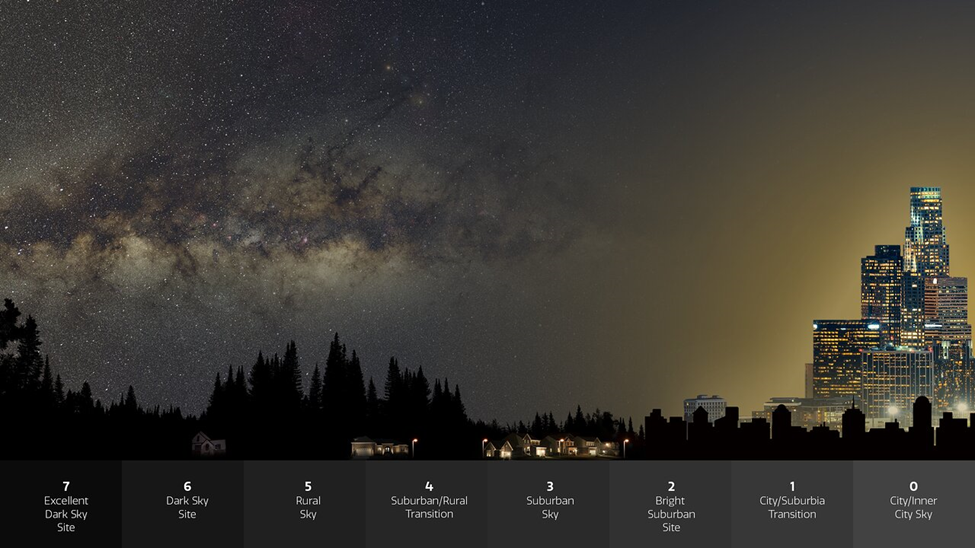Responsible Lighting Design Protects Dark Skies and Wildlife
- David Scmitt

- Aug 13, 2024
- 4 min read
Sustainability is at the core of our ethos at Clanton and Associates. As a result, we approach lighting design with the goal of creating spaces that allow humans and nature to thrive. One of the most important ways that we accomplish this goal is by working to limit light pollution in all of our designs.
What is lighting pollution?
Lighting pollution is light from human sources that alters the amount of light in an environment. It can come from headlights, streetlights, and building lights. Light pollution is often the result of wasted light: light which is not aimed where it’s needed for specific tasks, like pedestrians being able to see a walkway or drivers being able to see the road. Light can spill over from these areas into or shine directly into the sky.
There are a million reasons for limiting lighting pollution and many people have made their careers exploring them but this article will focus on the three that drive the Clanton team: protecting wildlife from the harmful effects of light, preserving our ability to conduct astronomical research, and allowing future generations of humans to experience the majesty of the night sky.
Lighting from human sources alters the biology of wildlife.
Nighttime and darkness are important to the health of many species and the ecosystems that they inhabit. Too much light can cause major disruptions to their behaviors interfering with migration patterns, development, and survival rates. Many species of birds (and some turtles!) use stars to navigate. Light that obscures the stars can interfere with these patterns disrupting the careful balance of ecosystems and interfering with reproduction.
From the perspective of environmental ethics, wildlife and humans benefit from reducing the effects of light pollution on wildlife. One reason is that species have intrinsic worth. Birds, frogs, and turtles, for example, have worth that depends only on their existence. In this view, it’s not only usefulness that gives a species worth, but the thing itself. A mountain flower stretches towards the sun, producing it’s purple, white, or yellow petals, persevering just for its own sake. Another reason is that other species provide ecosystem benefits. Examples include air quality, water quality, soil health, habitat, and aesthetic appreciation. Pollination is essential to plant reproduction and agriculture; ecosystems depend on the role they play. Aesthetic benefits are important too: to feel the thrill of seeing fish leap into the air from a lake or stream, or to sit pensively in a serene forest and find that the quiet is actually full of the sounds of birds and the wind.
Responsible lighting design can help protect wildlife. Using light only when and where it is needed helps prevent light from spilling into habitats and from disrupting ecosystems. This can take the form of limiting the amount of backlight and uplight (light that falls behind luminaires and light that is emitted at high angles) or dimming or turning off lights outside of the hours when humans are using spaces. Research also suggests that warmer colored lights are less disruptive to wildlife but it is important to consider species with sensitivities to specific wavelengths of light that may live in environments where lights will be installed.
Overlighting can reduce the ability of astronomers to observe objects in the night sky.
Sky glow from lighting can make stars and other objects difficult to see. Clearly light that shines directly upward contributes to sky glow. However, even light at nearly horizontal angles can be visible from surprisingly great distances. Light intensity reduces as distance increases, so it’s important to limit light output near observatories and other astronomical sites.
The image above, from the International Astronomical Union, illustrates the difference between overly lit environments and environments with excellent views of the night sky. In a brightly lit urban setting, many stars are invisible. In a site with an excellent dark sky, star clusters, nebulae, and galaxies are visible allowing both amateur and professional astronomers to continue their research.
Experiences of the night sky inspire us at Clanton and Associates.
Standing under a starry sky prompts contemplation. The distances between the stars and the other objects in the night sky are so incredibly vast, the mysteries of the universe so enticing, and the stars and planets are so numerous that they stretch the limits of our comprehension. The night sky is the closest we can get to experiencing infinity. The Milky Way Galaxy is about 100,000 light years across. If you could somehow travel at 10% of the speed of light, roughly 2,500 times faster than any human has ever traveled, crossing the Milky Way Galaxy would take 1,000,000 years. A closer destination, such as the Ring Nebula, would still take 25,000 years for a one-way journey at that rate. The sublime, towering beauty of the night sky has evoked awe in generations of humanity and continues to do so. The space all around us allows us to cast our imaginations outward, to reflect, to find rest, to find inspiration. It plays an important part in life on Earth. All of that inspires our work and our intention to continue to preserve access to the night sky for generations to come.
Want to learn more?
The growing threat of light pollution to ground-based observatories
Global light pollution is affecting ecosystems – what can we do?
Controlling light pollution (IAU)
Ecosystem services (USDA Climate Hubs)https://www.climatehubs.usda.gov/ecosystem-services
Ecological light pollution
Animals need the dark (NPS)




